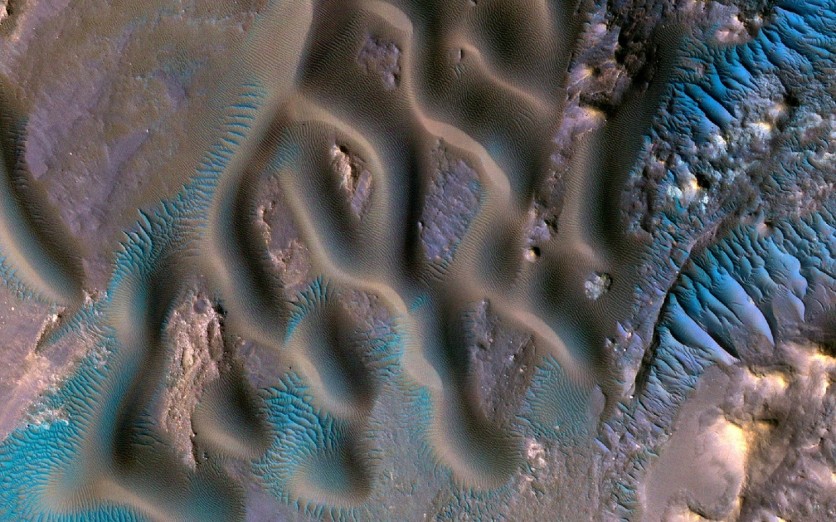There is a peculiar object on Mars, and it is known as the Transverse Aeolian Ridges that is seen on the Gamboa crater, and it presents a different color that opposes that of the "Red Planet." These ridges bring the color blue to their ripples, and while it is a different color than what is prominent there, it gives researchers and the public more information about its weather and geology.
Transverse Aeolian Ridges in Gamboa Crater: What Are These?

Transverse Aeolian Ridges are not new to NASA's study, but it still brings a piece of important information regarding Mars and its secrets that lies beneath. According to SciTechDaily, the Transverse Aeolian Ridges (TAR) are brighter and larger formations that appear as dunes on the planet.
The recent discovery by the High Resolution Imaging Science Experiment (HiRISE) shows a new one that appeared on the Gamboa Crater from Chryse Planitia to Acidalia Planitia.
Blue Ripples on Mars Brings Info on Weather and Geology
The blue ripples may be something that may bring doubts to the public about its existence on Mars, as multiple images portray the planet in its traditional red colors. However, these ridges are a part of Mars, and it brings a variety of colors that only add to it.
According to the report, the new color seen here is giving researchers more information on its weather and geology, particularly with how it works on Mars.
It is important to note that Mars' weather is different and unknown as of the present, with phenomena like these bring more information for all.
Mars and the Discoveries on It
An almost similar study on Mars is underway now, and it is the sand transport focus that the Perseverance rover previously observed on the Red Planet. It looks into the wind movement on Mars, and it aims to explain how the weather works on the planet via its sampling stops that put the rover in one position for several Sols.
There are several focuses on the Mars mission from 2020, and while there are other and older devices in place already, the Perseverance rover brings a significant addition to it. The latest venture that is to happen for the study is the collecting of samples by a spacecraft from NASA, which would bring the rocks and ground from the Martian planet to Earth.
NASA is enforcing a massive focus on Mars in recent times, and it is because it aims to know more about the planet for future expeditions, both uncrewed and crewed, to happen soon. The information regarding Mars' Transverse Aeolian Ridges is a massive topic in its study, and it aims to add more to what NASA is trying to uncover on the planet.
This article is owned by TechTimes
Written by Isaiah Richard
ⓒ 2025 TECHTIMES.com All rights reserved. Do not reproduce without permission.




